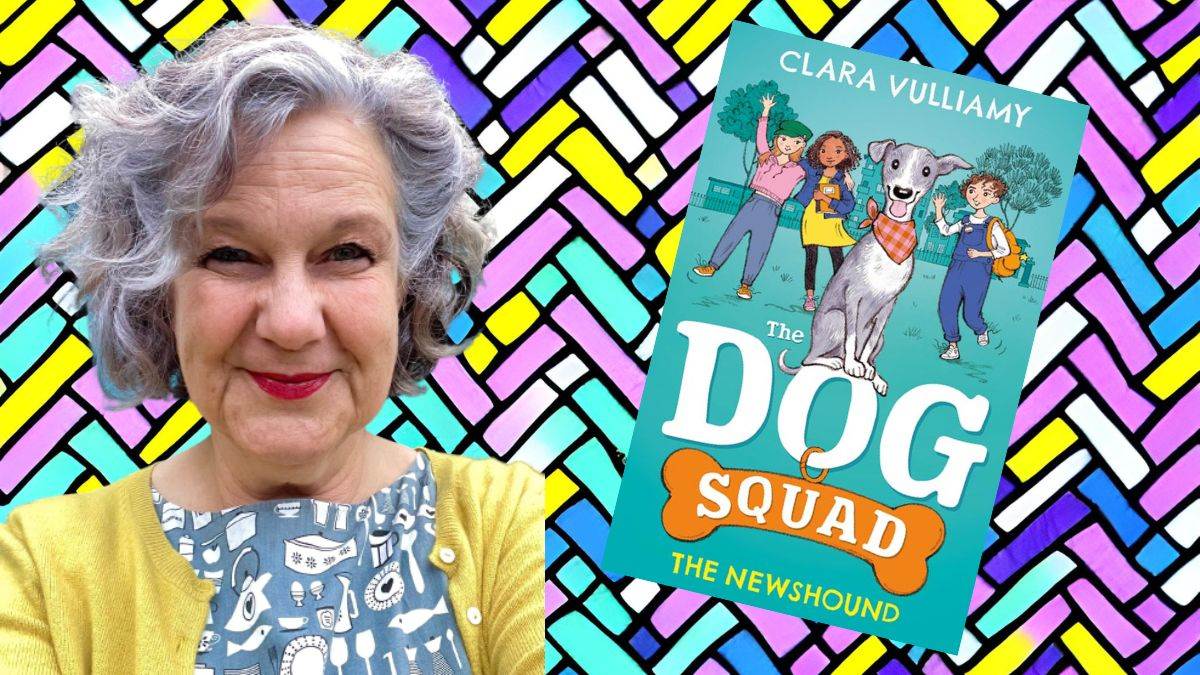Visual literacy: the importance of pictures in reading for pleasure
Author-illustrator Clara Vulliamy explains why illustrations are so vital in children’s books – for all ages.

Many years ago, I met a parent who was teaching their child to read. They did this by sellotaping plain pieces of paper over all the illustrations in their books. The reasoning: if the child looked at the pictures and guessed the words, this was in some way ‘cheating’ and would hinder the process. It shocked me then, and it shocks me still. What a sad way to suck the joy out of reading, by denying the child what is – arguably – the best bit!
Visual literacy in picture books
After all, children have an innate gift for visual literacy. They are naturally incredibly observant, and pick up on details many grown-ups will miss. Unlike the fast pace of a moving image on screen, the image on the page allows the reader to be in control, to take their time and to browse at their leisure. They are learning to look.
I am lucky to be both author and illustrator of the books I create, so I appreciate first-hand how words and images are woven together into one perfect whole. They bounce back and forth, taking turns to tell a different aspect of the story.
In my new series, The Dog Squad, three young reporters – Eva, Simone and Ash – find a small stray dog, a whippet called Wafer. They get to work, investigating who he is and where he comes from – all the time half-hoping they won’t find out, so they can keep him forever. Each page of text is broken up with lots of illustrations and other visual elements and decorations, so it’s not too daunting for less confident readers. There is a lot of detail and humour to savour and enjoy.
It’s wonderful to draw Wafer: the smooth, graceful lines, his nervous but trusting face, his big soulful eyes. There are many other dogs, too, of all different breeds, shapes and sizes. I hope readers will have fun getting to know them. But for me it’s the human characters who really drive the narrative. There’s an illustration, early on, of the three children, looking out at the viewer and holding their gaze with a confident, direct, open expression, which conveys so much more than I could put into words.
I make books for all ages, and love adapting my process for each audience. For example, in a picture book of mine called Martha and The Bunny Brothers I Love Holidays, there is a page of many different ice creams and lollies. When sharing this book with tiny tots, I have to allow an extra ten minutes at least to pause for this moment in the story. We must all choose our favourite ice cream, maybe a second choice, make absolutely sure we have chosen wisely… it’s a serious business. At some point the reader will learn to decipher those funny squiggles that make up Martha’s words, ‘I don’t know which to choose, they are all so yummy!’ Part of the illustrator’s job is to act as an incentive.
Pictures are for everyone
BUT! Pictures are not just for young folks! I’m a huge fan of illustrated fiction for everybody, and hate the idea that illustrations will be sternly removed from books once a child is old enough to read. Just look at A Monster Calls by Patrick Ness and illustrated by Jim Kay: the book is a work of art as well as a masterpiece.
Pictures can do so much more than simply show the scene described in the text. Sometimes words and image pull in different directions, a chance for a deadpan moment of understatement. Ian Falconer’s Olivia the Pig ‘got pretty good’ at sandcastles – hers is an epic, perfect, ENORMOUS recreation of the Empire State Building.
Sometimes an illustration will reveal a vital plot point not mentioned in the text, that perhaps the characters in the story are unaware of too. ‘Ha!’ thinks the reader, ‘I am ahead of them – I know something they don’t.’ They might even feel on some level they have out-smarted the author. They saw it first, how clever!
Encouraging storytelling
We aren’t just nurturing of love of reading, of course. We are encouraging children to be storytellers, too. When I visit schools, I make sure everyone in the room is seeing themselves as an author, an illustrator, or both. We all have stories to tell. Crucially, for many, it is a slow and frustrating chore to write down the words, but their visual imagination is already firing on all cylinders. For some, the best starting point to writing a story might be a completely different way of arranging the page: one big drawing, perhaps, a couple of speech balloons, a phrase or two scattered here and there, adding to it and adding to it… and they’re off.
My illustrated young fiction series Dotty Detective is presented in a diary format. The pages are covered in doodles, lists, stickers and various collaged bits and bobs, as if drawn by Dot herself. This cartoonish, diary style of illustration has been brilliantly deployed in Loki by Louie Stowell and Tom Gates by Liz Pichon, among others. Its child-like quality is deceptive – it is enormously skilled – but has a lovely way of encouraging readers to think: that doesn’t look too difficult, I could do that.
To me this is the most excellent and radical idea, that we are all in this together – the author, the illustrator, one young reader looking at the pictures, another reading the words, yet another who is using the book to make up a new story of their own… what a joyful shared adventure – what a team!
The Dog Squad by Clara Vulliamy is out now.





